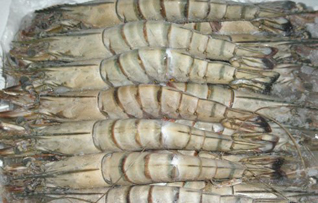 are getting prices 50 higher than last year for their products in China, according to a leading official at the country’s fisheries representative body.
are getting prices 50 higher than last year for their products in China, according to a leading official at the country’s fisheries representative body.“Demand from China has replaced a weaker EU market, it’s very good for our black tiger and vannemei producers,” said Dr. Shine Kumar, deputy director of MPEDA. “China used to be a fish market for us but now we’re getting a lot of demand from here for our shrimp, especially Vannemei.” Interestingly however, China is ranked in fourth place — behind Southeast Asia, the U.S. and the EU (in that order) — in Kumar’s ranking of India’s top seafood markets.
Indian seafood exporters are also eager to lift sales of whole and gutted fish as well as lobsters in China and are working hard to build sales of perch and croakers, according to Kumar. “We have plenty of resources from northeast or northwest India,” he explains. He says lobster consumption remains limited in India “as it’s beyond the means of most Indians so we export it.”
As a sign of its intent MPEDA has brought a record ten firms to the ongoing China Seafood Expo Show in the northeasterly city of Dalian. Among them Blue Water Foods & Exports Co. which has had a good year satisfying Chinese shrimp demand, according to CEO, M. Sreenivas Bhat. He told SeafoodSource that volumes of shrimp will rise 20 percent to 30 percent this year compared to last year, while prices will rise 30 percent. China accounts for 50 percent of Blue Water’s exports, with 30 percent going to Thailand and 20 percent to the EU. However, Bhat expects prices to plateau in 2014: “Prices are already high, so we don’t expect much of an increase, but demand from China will hold steady.”
Also in the MPEDA delegation in China, Mumbai-based exporter Anja Naik has noted a “large increase” this year in demand for “table fish” such as barracuda as well as cuttlefish and squid that it supplies to Chinese wholesalers. Naik said she sees strong price growth for wild-caught shrimp. The premium for wild over farmed is 10 percent to 15 percent said Naik.
MPEDA aquaculture priorities include tilapia cultivation as well as sea bass, grouper. MPEDA has been showcasing Indian mud crabs in Dalian, seeking Chinese buyers. “This is a new product for us but we have done a lot of research and development and we’ll have the volumes.” India also expects to grow surimi sales in China, said Kumar.
The MPEDA official said India plans to lift imports of Norwegian salmon, which suggests the opening of opportunities in India’s domestic market. While Indian economic success has been impressive in recent decades, its demand for imported seafood remains tame compared to China. India is also seeking to leverage comparatively low wages to entice more seafood processing business into the country. Indian wages remain low compared to comparative averages in China. Laborers earn USD 1,300 (EUR 965) in Dehli and Mumbai compared to USD 6,700 (EUR 4,975) and USD 7,600 (EUR 6,642) in Shanghai and Beijing, according to a recent survey by Swiss-based bank UBS.





